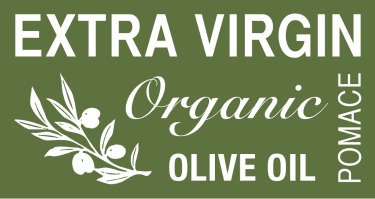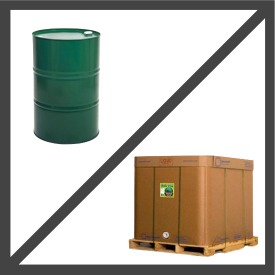
Everyone who buys bulk olive oil knows that the harvest this year has been really tough. Prices have been high, and it’s affected suppliers and buyers across the board. It’s not just your company, prices have gone up for everyone. It’s challenging to say the least, and we understand how much this can affect your business.
As I’ve been working with customers trying to help them figure out how to handle these rising costs, we’ve had a number of suggestions that have consistently come up time and time again.
If you’re facing the same struggle, here’s what I suggest.
You Can’t Control The Olive Oil Market, But Here’s What You Can Control
It’s challenging when the market is something that’s out of everyone’s control. You don’t know how much it’s going to jump, and your supplier can try to keep you updated, but even they are keeping up with the changes on a daily basis. It’s an ever moving target.
That said, it’s especially important in times like this focus on what you can control. You can control the grade of olive oil that you’re buying, the general type(s) of oil that you’re opting for, and the packaging that you get your oil in.
Take control of what you can by reviewing the suggestions below.
Choose A Lower Grade Of Olive Oil
 Instead of staying with an Extra Virgin Olive Oil, now may be the time to consider a lower grade.
Instead of staying with an Extra Virgin Olive Oil, now may be the time to consider a lower grade.
However, keep in mind that your company may be limited with this option because:
a) you have a grade of olive oil already printed on your finished packaging, or
b) your customers rely on you using Extra Virgin Olive Oil in your high quality products
In a normal harvest year, we’d suggest considering Refined or Pure Olive Oil instead of Extra Virgin, if you need to save a little bit of money. However, in years where the harvest is tough, the price of Pure Olive Oil is typically right around the price of Extra Virgin Olive Oil. So there isn’t much savings on that front.
That means that the next best option to save a substantial amount of money will be Olive Pomace Oil. To learn more about that oil, explore any of the following articles:
- The Pros And Cons Of Olive Pomace Oil
- Why Do Food Manufacturers Use Olive Pomace Oil?
- Olive Pomace Oil: Good Or Bad?
- How Olive Pomace Oil Is Made
Don’t be disappointed if you don’t like any of the options on this front, just move onto the next suggestion!
Opt For A Blend
 If you don’t want to use a lower grade of olive oil, there are other options. Stick to your Extra Virgin Olive Oil if it works well for you and your customers! But if you can’t handle the rising prices of 100% EVOO in your manufacturing, consider opting for a custom blend with Sunflower, Safflower, Canola or Soybean Oil.
If you don’t want to use a lower grade of olive oil, there are other options. Stick to your Extra Virgin Olive Oil if it works well for you and your customers! But if you can’t handle the rising prices of 100% EVOO in your manufacturing, consider opting for a custom blend with Sunflower, Safflower, Canola or Soybean Oil.
This will help you lower your costs, though you will have to include the additional oil onto your printed ingredient listing below the nutrition facts on your product.
Blends Are Available In Organic & Non-GMO Varieties
If you use an Organic Extra Virgin Olive Oil, you can always create your own organic certified blend with Organic Sunflower, Organic Soybean Oil or Organic Canola Oil.
If you need your oil blend to be Non-GMO Project Verified, the most common blend would be a mix of Non-GMO Expeller Pressed Canola Oil with the Extra Virgin Olive Oil. Other good options include the naturally non-GMO Sunflower and/or Safflower Oil, or you can use Non-GMO Project Verified Soybean Oil.
Pick Your Own Ratio
The most common blend ratios are 75/25, 80/20 and 90/10. But if you work with a custom supplier and packer like Centra Foods, you can also pick your own ratio to meet your exact needs. Some people will opt for a 51/49 Blend (similar to a 50/50 but helps to determine which oil will come first in your ingredient label). Other people opt for a 98/2 blend. So there’s lots of flexibility to create exactly what will work best for you.
The best thing to do is to look at your cost goals, and then work backwards to see what ratio of an olive oil blend would fit. Then you can decide if the flavor profile will work, if your customers will still be happy with the ingredients, etc. before making any final decisions.
Choose The Lowest Cost Packaging
 Back in the day, 35 Lb. Containers used to be the most expensive and totes were the cheapest, with drums somewhere in between. Smallest packaging was more expensive, and as packaging got larger it got cheaper and cheaper.
Back in the day, 35 Lb. Containers used to be the most expensive and totes were the cheapest, with drums somewhere in between. Smallest packaging was more expensive, and as packaging got larger it got cheaper and cheaper.
With the rising cost of steel in recently months, however, we have seen the price comparison between some packaging options flip-flop. Now, drums are the most expensive by a long stretch — at least a few cents per pound, and that can add up.
If possible, opt for the 275 gallon totes or even the 35 Lb. Containers if you can’t handle the tote packaging.
Take Control Of What You Can
In conclusion, the olive oil market is out of your hands, and unfortunately, it’s out of my hands too. What is in your power, however, is the oils that you’re using and the packaging that you’re getting them in.
As always, we’re here to strategize with you!
Topics: Prices & Saving Money












